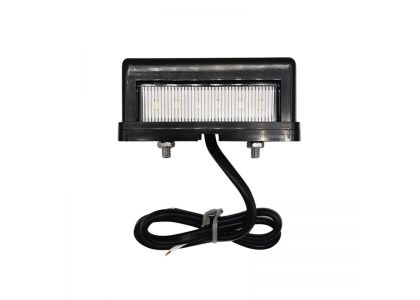Retrofitting LED license plate lighting – Useful information

by autoteile-markt Published: On 2rd Nov. 2022
The license plate lighting of most cars in the past was carried out with light bulbs. However, the LED is the newer bulb and has many advantages over the old bulbs. License plate lighting is a safety-relevant part of the car, so there is legal to observe if you want to replace it. In our guide, we show which legal requirements exist, which advantages LED license plate lighting has and how you can retrofit it yourself.
Function of license plate lighting
The main function of license plate lighting is that it illuminates the license plate over a large area. It ensures that the license plate remains legible even in the dark. For this purpose, several lamps are inserted above the license plate into the boot lid of the car, which illuminate the license plate along the entire width.
License plate lighting is a safety-relevant component of the car. It is therefore not only subject to the StVO, but also to some EU regulations. Any arbitrary changes to the lighting are strictly prohibited. Adaptations and modernisations are only allowed under special regulations, so you should exclude possible errors when renewing.
Light bulbs use a very old system. Electric current heats up a wire until it glows, hence the name. Bulbs are easy to assemble and their light color is a pleasant warm white. Due to their low efficiency, however, they require quite a lot of current to achieve the desired brightness and have a short service life on average. Bulbs are being pushed out of business not only in cars, but also in other areas.
The LED is the newer version. It is optionally advertised as a light emitting diode, luminescent diode or light emitting diode. Here nothing glows anymore, but semiconductor crystals are used, which emit light through the current flow. High temperatures are a thing of the past, which makes the LED more economical. The advantages clearly outweigh: An LED works with less heat, requires less electricity, has a much longer service life and is available in all light colours from cold white to warm white. Their only disadvantage is the higher purchase price.